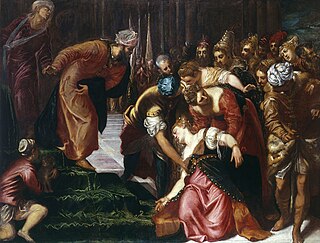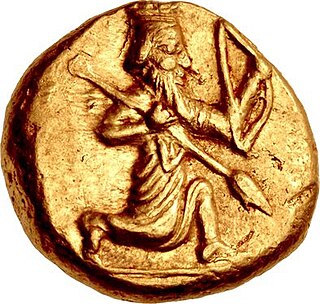Cory's Ancient Fragments is compendium of fragments from ancient writers collected and published by the antiquarian and miscellaneous writer Isaac Preston Cory. The first edition was published in 1826, further followed by a revised edition containing various ancient King List's (e.g. Manetho). A further enlarged edition appeared in 1876, edited by historian E. Richmond Hodges which added many more ancient fragments.
Berossus, Abydenus, Nicolaus of Damascus, Alexander Polyhistor, Eupolemus, Thallus,
Ctesias, Diodorus Siculus, Castor of Rhodes, Herodotus, Marcus Velleius Paterculus
Manetho, Artapanus, Diodorus Siculus, Chaeremon of Alexandria
Manetho copied down from the ancient Egyptian inscriptions a list of eight successive Persian kings, beginning with Cambyses, the son of Cyrus the Great, at the request of Ptolemy Philadelphus (266 BCE – 228 BCE).
It is to be noted here that between Cambyses' reign and Darius, the son of Hystaspes, there was an interim period whereby the Magi ruled over Persia. This important anecdote is supplied by Herodotus who wrote the Magian ruled Persia for 7 months after the death of Cambyses. Josephus, on the other hand, says they obtained the government of the Persians for a year.
Hodges added more ancient fragments including a section of "miscellaneous fragments" of ancient writers (e.g. Sallust, Agatharchides). However, Hodge removed Cory's original fragments from neoplatonists, which he considered to be forgeries..

Xerxes I, commonly known as Xerxes the Great, was a Persian ruler who served as the fourth King of Kings of the Achaemenid Empire, reigning from 486 BC until his assassination in 465 BC. He was the son of Darius the Great and Atossa, a daughter of Cyrus the Great. In Western history, Xerxes is best known for his invasion of Greece in 480 BC, which ended in Persian defeat. Xerxes was designated successor by Darius over his elder brother Artobazan and inherited a large, multi-ethnic empire upon his father's death. He consolidated his power by crushing revolts in Egypt and Babylon, and renewed his father's campaign to subjugate Greece and punish Athens and its allies for their interference in the Ionian Revolt. In 480 BC, Xerxes personally led a large army and crossed the Hellespont into Europe. He achieved victories at Thermopylae and Artemisium before capturing and razing Athens. His forces gained control of mainland Greece north of the Isthmus of Corinth until their defeat at the Battle of Salamis. Fearing that the Greeks might trap him in Europe, Xerxes retreated with the greater part of his army back to Asia, leaving behind Mardonius to continue his campaign. Mardonius was defeated at Plataea the following year, effectively ending the Persian invasion.

Darius I, commonly known as Darius the Great, was the third King of Kings of the Achaemenid Empire, reigning from 522 BCE until his death in 486 BCE. He ruled the empire at its territorial peak, when it included much of Western Asia, parts of the Balkans and the Caucasus, most of the Black Sea's coastal regions, Central Asia, the Indus Valley in the far east, and portions of North Africa and Northeast Africa including Egypt (Mudrâya), eastern Libya, and coastal Sudan.

Ahasuerus is a name applied in the Hebrew Bible to three rulers of Ancient Persia and to a Babylonian official first appearing in the Tanakh in the Book of Esther and later in the Book of Tobit. It is a transliteration of either Xerxes I or Artaxerxes I; both are names of multiple Achaemenid dynasty Persian kings.

Bardiya or Smerdis, also named as Tanyoxarces by Ctesias, was a son of Cyrus the Great and the younger brother of Cambyses II, both Persian kings. There are sharply divided views on his life. Bardiya either ruled the Achaemenid Empire for a few months in 522 BCE, or was impersonated by a magus called Gaumata, whose name is given by Ctesias as Sphendadates, until he was toppled by Darius the Great.
Megabyzus was an Achaemenid Persian general, son of Zopyrus, satrap of Babylonia, and grandson of Megabyzus I, one of the seven conspirators who had put Darius I on the throne. His father was killed when the satrapy rebelled in 484 BCE, and Megabyzus led the forces that recaptured the city, after which the statue of the god Marduk was destroyed to prevent future revolts. Megabyzus subsequently took part in the Second Persian invasion of Greece. Herodotus claims that he refused to act on orders to pillage Delphi, but it is doubtful such orders were ever given.
Artabazos was a Persian general in the army of Xerxes I, and later satrap of Hellespontine Phrygia under the Achaemenid dynasty, founder of the Pharnacid dynasty of satraps. He was the son of Pharnaces, who was the younger brother of Hystaspes, father of Darius I. Artabazos was therefore a first cousin of the great Achaemenid ruler Darius I.

Atossa was an Achaemenid empress. She was the daughter of Cyrus the Great, the sister of Cambyses II, the wife of Darius the Great, the mother of Xerxes the Great and the grandmother of Artaxerxes I.

Sogdianus was briefly a ruler of the Achaemenid Empire for a period in 424–423 BC. His short rule—lasting not much more than six months—and the little recognition of his kingdom are known primarily from the writings of Ctesias; who is known to be unreliable. He was reportedly an illegitimate son of Artaxerxes I by his concubine Alogyne of Babylon.

Manetho is believed to have been an Egyptian priest from Sebennytos who lived in the Ptolemaic Kingdom in the early third century BC, during the Hellenistic period.

The Late Period of ancient Egypt refers to the last flowering of native Egyptian rulers after the Third Intermediate Period in the 26th Saite Dynasty founded by Psamtik I, but includes the time of Achaemenid Persian rule over Egypt after the conquest by Cambyses II in 525 BC as well. The Late Period existed from 664 BC until 332 BC, following a period of foreign rule by the Nubian 25th Dynasty and beginning with a short period of Neo-Assyrian suzerainty, with Psamtik I initially ruling as their vassal. The period ended with the conquests of the Persian Empire by Alexander the Great and establishment of the Ptolemaic dynasty by his general Ptolemy I Soter, one of the Hellenistic diadochi from Macedon in northern Greece. With the Macedonian Greek conquest in the latter half of the 4th century BC, the age of Hellenistic Egypt began.
The history of Persian Egypt is divided into two eras following the first Achaemenid conquest of Egypt punctuated by an interval of independence:

The Achaemenid dynasty was a royal house that ruled the Persian Empire, which eventually stretched from Egypt and Thrace in the west to Central Asia and the Indus Valley in the east.

Seder Olam Rabbah is a 2nd-century CE Hebrew language chronology detailing the dates of biblical events from creation to Alexander the Great's conquest of Persia. It adds no stories beyond what is in the biblical text, and addresses such questions as the age of Isaac at his binding and the number of years that Joshua led the Israelites. Tradition considers it to have been written about 160 CE by Jose ben Halafta, but it was probably also supplemented and edited at a later period.
Cyaxares II was a king of the Medes whose reign is described by the Greek historian Xenophon. Some theories have equated this figure with the "Darius the Mede" named in the Book of Daniel. He is not mentioned in the histories of Herodotus or Ctesias, and many scholars doubt that he actually existed. The question of his existence impacts on whether the kingdom of the Medes merged peacefully with that of the Persians in about 537 BC, as narrated by Xenophon, or was subjugated in the rebellion of the Persians against Cyrus' grandfather in 559 BC, a date derived from Herodotus (1.214) and almost universally accepted by current scholarship.

The Twenty-seventh Dynasty of Egypt, also known as the First Egyptian Satrapy, was a satrapy of the Achaemenid Empire between 525 and 404 BC. It was founded by Cambyses II, the King of Persia, after the Battle of Pelusium and the Achaemenid conquest of Egypt, and his subsequent crowning as Pharaoh of Egypt. It was disestablished upon the rebellion and crowning of Amyrtaeus as Pharaoh. A second period of Achaemenid rule in Egypt occurred under the Thirty-first Dynasty of Egypt.

The Achaemenid Empire or Achaemenian Empire, also known as the Persian Empire or First Persian Empire, was an Iranian empire founded by Cyrus the Great of the Achaemenid dynasty in 550 BC. Based in modern-day Iran, it was the largest empire by that point in history, spanning a total of 5.5 million square kilometres. The empire spanned from the Balkans and Egypt in the west, most of West Asia, the majority of Central Asia to the northeast, and the Indus Valley to the southeast.
Darius, was crown prince of the Persian Empire. He was the eldest son of the Persian king Xerxes I and his wife Amestris. His younger brothers were Hystaspes and Artaxerxes, and his younger sisters were Rhodogune and Amytis.

The first Achaemenid conquest of Egypt took place in 525 BCE, leading to the foundation of the Twenty-seventh Dynasty of Egypt, also known as the "First Egyptian Satrapy". Egypt thus became a satrapy of the Achaemenid Empire until 404 while still maintaining Egyptian royalty customs and positions. The conquest was led by Cambyses II, who defeated the Egyptians at the Battle of Pelusium, and crowned himself pharaoh. Achaemenid rule was disestablished upon the rebellion and crowning of Amyrtaeus as Pharaoh. A second period of Achaemenid rule in Egypt occurred under the Thirty-first Dynasty of Egypt.
Persica is a lost Ancient Greek text, divided in 23 books, on Assyrian, Median and Persian history written by Ctesias of Cnidus, a physician at the court of the Persian king Artaxerxes II. The work's style and value for the study of the Achaemenid history have been a subject of much controversy among modern scholars.
Jewish tradition has long preserved a record of dates and time sequences of important historical events related to the Jewish nation, including but not limited to the dates fixed for the building and destruction of the Second Temple, and which same fixed points in time are well-documented and supported by ancient works, although when compared to the synchronistic chronological tables of modern-day chroniclers, belabored mostly by western scholars of history, they are, notwithstanding, often at variance with their modern dating system. Discrepancies between the two systems may be as much as 2 years, or well-over 100 years, depending on the event. Prior to the adoption of the BC / AD era of computation and its synchronization with the regnal years of kings and Caesars recorded in historical records, Jews made use of the earlier Seleucid era counting, or, in Hebrew, minyan li-šṭarōth, by which historical dates were marked, from the time of Alexander the Great.